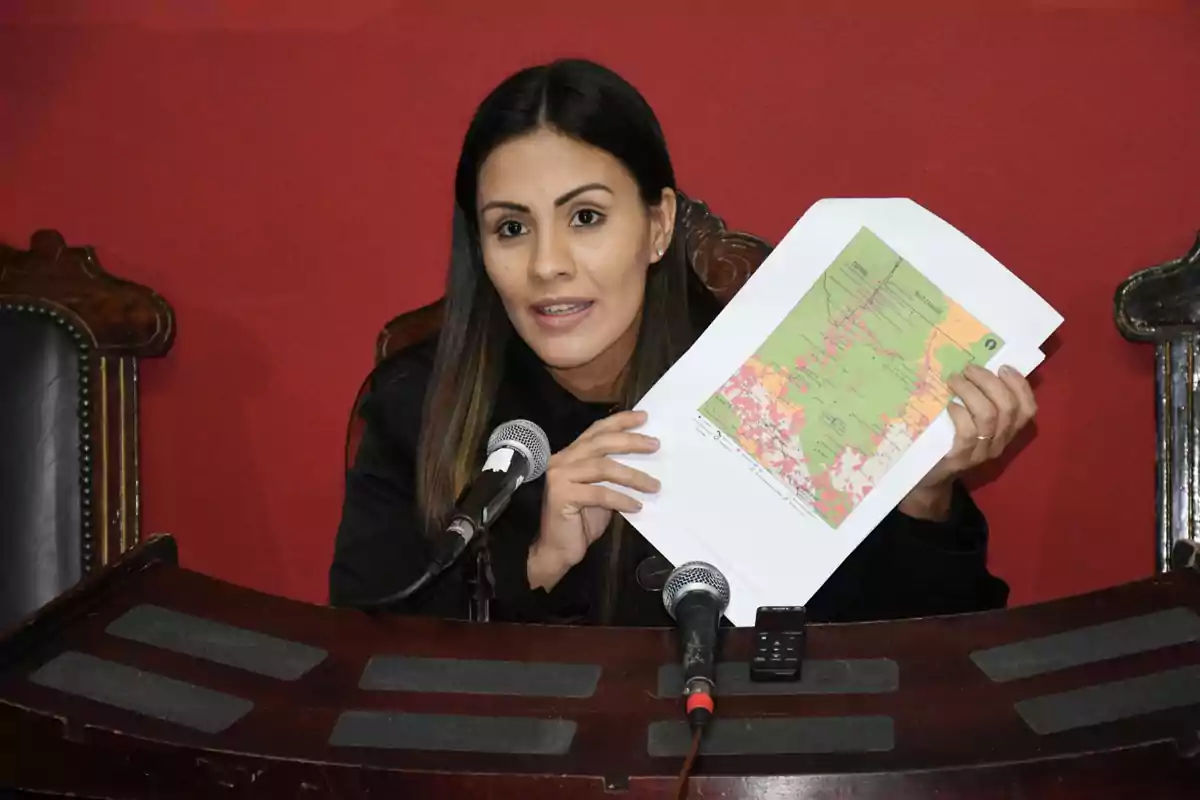
María René Álvarez: The TSE manipulated the electoral cartography to benefit MAS
Opposition deputy Álvarez indicated that the Supreme Electoral Court modified the cartography authoritatively
Creemos's deputy, María René Álvarez, questioned the new electoral cartographic map approved by the Supreme Electoral Tribunal (TSE). According to the legislator, the changes were made without socializing or consulting with the representatives of the affected regions. This situation has caused discontent among opposition sectors who see the measure as favoring the Movement Toward Socialism (MAS).
Álvarez denounced that this modification directly affects the political representation of several areas in Santa Cruz. One of the main criticisms from the deputy is the merger of San Ignacio de Velasco with San Julián. The legislator criticized that both regions have neither affinity nor territorial connection.
For Álvarez, this decision weakens the opposition strongholds in Chiquitania. The parliamentarian warned about an attempt to dilute the opposition vote with this restructuring. Additionally, she emphasized that this decision was made unilaterally.
"We found out about these changes through the pages of the Departmental Electoral Tribunal," Álvarez pointed out. According to the deputy, the TSE already had a final resolution without having previously consulted the affected communities. Álvarez considered that the process should have been more transparent.
She also lamented that the electoral authorities did not fulfill the commitment to prior socialization. This lack of dialogue has caused uncertainty and discontent among the region's inhabitants.
The controversy also reached the community of Piso Firme. Álvarez denounced that, according to the new electoral map, this community is listed as part of Beni. However, the deputy recalled that previous agreements established that Piso Firme would remain part of Santa Cruz.
The legislator considered that this decision undermines the identity and rights of the area's inhabitants. She warned that this change could generate administrative and political conflicts.
The deputy stated that the changes in the cartography favor MAS. According to Álvarez, the new distribution allows opposition municipalities to lose electoral influence. This situation, she said, could impact the results of the upcoming national elections.
The legislator assured that this is part of a political strategy to benefit the ruling party. Additionally, she mentioned that these changes weaken the representation of the opposition in the Legislative Assembly.
Is the MAS regime preparing another fraud?

From the Departmental Electoral Tribunal (TED) of Santa Cruz, its vice president, José Miguel Callejas, replied to the criticisms. Callejas assured that Piso Firme will continue voting in Santa Cruz. However, he clarified that the TED doesn't have the authority to define departmental boundaries.
He also argued that the cartographic modifications follow criteria established in the Constitution. Among them, he mentioned territorial continuity, geographical affinity, and population density.
Meanwhile, the vice president of the TSE, Francisco Vargas, denied any political favoritism in the new electoral distribution. Vargas pointed out that the changes are due to a need to redistribute the population equitably in each constituency.
Despite these clarifications, opposition sectors announced legal measures against the electoral cartography. Assembly member Zvonko Matkovic stated that he will challenge the new distribution because the TSE prepared the electoral map authoritatively. Matkovic assured that the changes affect regions where MAS had less support, this measure responds to the political interests of the ruling party.

From the opposition, there is criticism of the short time to challenge the new cartography. Deputy Álvarez pointed out that the deadlines are short and make it difficult to present observations. The parliamentarian demanded an extension of the time to review the changes.
She also considered that the speed with which the new map was approved raises suspicions. She also warned about the possible consequences these changes could have in the elections.
The TSE aligned with the regime has assured that the changes in the cartography aim to improve the distribution of the electoral population. However, the opposition maintains that the modifications harm Santa Cruz and benefit MAS. The discussion about the legitimacy of the new electoral distribution remains open.
The modifications to the electoral map without consulting political and social actors reinforce suspicions that the TSE acts in favor of MAS. The lack of transparency and the adjustment of constituencies in opposition areas demonstrate a pattern that can alter the popular will in the elections.
More posts: